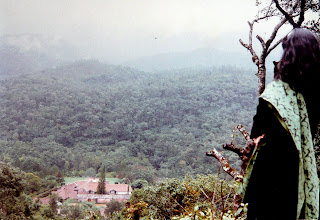The first Englishwoman in India
 Sir Thomas Roe
Sir Thomas RoeIn one of my blogs about AR Banerji ICS, former Diwan of Cochin, I had written that his mother Rajkumari was the first Indian woman to have set foot on the soil of England. She went to England in AD 1871 following her husband, Sevabrata Sasipada Banerji, a great social reformer of Bengal who gave special emphasis for the emancipation of woman.
In this context I was curious to know as to who was the first Englishwoman who came to India. This information I got while reading the book “Chow Chow”, - A journal kept in India, Egypt and Syria- now a rare one at that written by Lady Falkland, the daughter of King William IV of Great Britain and the wife of Viscount Falkland. Lord Falkland was the governor of Bombay who came to India with his wife during the spring of AD 1848.
William Hawkins, nephew of Admiral Sir John Hawkins –pioneer of the English slave trade and the terror of the Spanish Armada- came to Surat in 1608 and travelled to Agra to negotiate a treaty with the emperor Jahangir. With an import tax of three and a half per cent, he imported English cloth and metals and exported calico to England. Calico, the name of which is derived from Calicut, became very desirable in Europe and set the fashion trends.
Emperor Jahangir reportedly gifted Capt. William Hawkins with an Armenian girl from the royal harem. Eventually, Mrs. Hawkins returned to England with her husband who died on the voyage. The ship’s captain was one Gabriel Towerson and the lady found a match in him. Towerson had later died at the hands of the Dutch.
In this context I was curious to know as to who was the first Englishwoman who came to India. This information I got while reading the book “Chow Chow”, - A journal kept in India, Egypt and Syria- now a rare one at that written by Lady Falkland, the daughter of King William IV of Great Britain and the wife of Viscount Falkland. Lord Falkland was the governor of Bombay who came to India with his wife during the spring of AD 1848.
William Hawkins, nephew of Admiral Sir John Hawkins –pioneer of the English slave trade and the terror of the Spanish Armada- came to Surat in 1608 and travelled to Agra to negotiate a treaty with the emperor Jahangir. With an import tax of three and a half per cent, he imported English cloth and metals and exported calico to England. Calico, the name of which is derived from Calicut, became very desirable in Europe and set the fashion trends.
Emperor Jahangir reportedly gifted Capt. William Hawkins with an Armenian girl from the royal harem. Eventually, Mrs. Hawkins returned to England with her husband who died on the voyage. The ship’s captain was one Gabriel Towerson and the lady found a match in him. Towerson had later died at the hands of the Dutch.

Sir John Hawkins
In 1617, Mrs. Towerson set sail from England to return to India on one of the ships of the East India Company. She brought with her a companion, Mrs. Hudson, her maid Frances Webb, a factor named Richard Steele and a chaplain the Rev. Mr. Golding.
Interestingly, the tedium of the journey was too much for Frances and she compromised herself with Steele. At the Cape, they were married “under a tree “and a baby arrived soon after they set foot on the Indian soil at Surat.
Mesdames Hudson and Steele may jointly claim the title of the first Englishwoman in India.
The Rev. Golding had also a fascination for one of the ladies in the party to Agra and his clerical duties at the factory took a back seat. Sir Thomas Roe then employed as a diplomat put the amorous chaplain under arrest in order to create a good impression of his countrymen in the Mughal court. Incidentally Roe was a favourite of Jahangir and was his drinking companion.
Interestingly, the tedium of the journey was too much for Frances and she compromised herself with Steele. At the Cape, they were married “under a tree “and a baby arrived soon after they set foot on the Indian soil at Surat.
Mesdames Hudson and Steele may jointly claim the title of the first Englishwoman in India.
The Rev. Golding had also a fascination for one of the ladies in the party to Agra and his clerical duties at the factory took a back seat. Sir Thomas Roe then employed as a diplomat put the amorous chaplain under arrest in order to create a good impression of his countrymen in the Mughal court. Incidentally Roe was a favourite of Jahangir and was his drinking companion.
Dubai,11th August 2008.



Comments